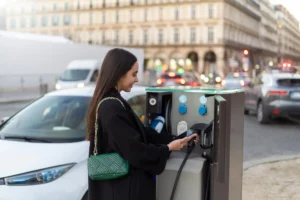
Home / EV Charging News / Exploring Bidirectional Charging: Is It the Future?
As the world transitions towards more sustainable energy sources and electric vehicles (EVs) become increasingly prevalent, innovative technologies are emerging to enhance the efficiency and functionality of EVs. One such technology is bidirectional charging, which allows for the flow of electricity not just from the grid to the vehicle but also from the vehicle back to the grid or to other devices. This article explores the concept of bidirectional charging, its potential benefits, challenges, and its role in the future of energy and transportation.
Bidirectional charging refers to the ability of an electric vehicle to both receive power from and supply power to the grid or other electrical devices. This is made possible through a bidirectional charger, which facilitates the two-way flow of electricity. The main components of a bidirectional charging system include the bidirectional charger, the vehicle’s battery management system, and a control unit that manages the flow of electricity.
Types of Bidirectional Charging:
Bidirectional charging offers numerous advantages for both EV owners and the broader energy grid.
Despite its potential benefits, bidirectional charging faces several challenges that must be addressed before it can be widely adopted.
Despite the challenges, bidirectional charging holds great promise for the future of energy and transportation.
Bidirectional charging represents a promising innovation in the realm of electric vehicles and energy management. Its potential to enhance grid stability, reduce energy costs, provide emergency power, and support environmental goals makes it an attractive option for the future. However, realizing the full potential of bidirectional charging will require overcoming technical, economic, and regulatory challenges. As technology advances and the adoption of renewable energy sources grows, bidirectional charging is poised to play a significant role in the future of sustainable transportation and energy systems. Investing in this technology today will pave the way for a more resilient and efficient energy future.
